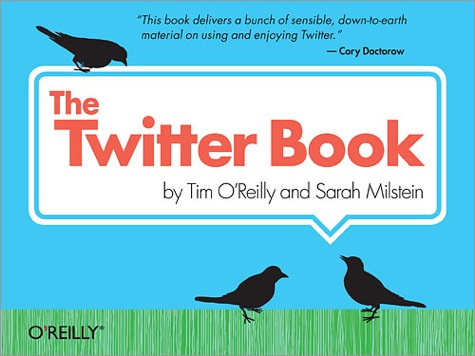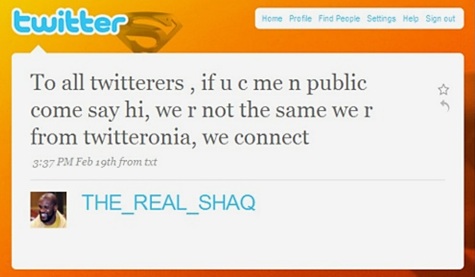The Twitter Book, Second Edition
Tim O’Reilly and Sarah Milstein
Publisher: O’Reilly Media
Print ISBN: 978-0-596-80281-3 | ISBN 10: 0-596-80281-1
EBook ISBN: 978-0-596-80410-7 | ISBN 10: 0-596-80410-5
Price: eBook: US$15.99 | Print: US$19.99
How complex could Twitter be? After all the service condenses messages into 140 characters!
Twitter is one social network service that you shouldn’t judge solely by its outwards appearance. It is incredibly versatile.

The Twitter Book, Second Edition will take you deeper into the inner workings of Twitter than you ever thought was possible.
In over 250 pages and six carefully crafted chapters, the authors present an overview of everything from setting up and sending your first Tweet to using Twitter as a channel for business or self promotion.
Throughout the book various anecdotes are provided as to the origins of Twitter and how it has evolved since its introduction in 2006.
The inclusion of individual tweets from well known personalities and normal everyday people was a welcome addition to assist readers fully understand the diversity of the service.
Although the individual tweets were useful, formatting of the ePub file within iBooks on the iPad resulted in a less than user friendly outlay. Often the graphics would be presented on a independent page to that of the corresponding discussion. This made for a distracting and continuous page turning experience.
The initial chapters in the book take a look at how to sign up to Twitter, send your first tweet, follow people you are interested in, and decode the jargon of Twitter. Such as what is a hashtag and how does the @ symbol play a role in discussions and making reference to others.
Users relatively new to the Twitter platform may initially struggle with how to appropriately reply, retweet, or reference someone. Whilst existing users will be happy to engage in a discussion via Twitter, is is important to know that a certain etiquette is applied by existing users of the service. The authors take you through all the appropriate and inappropriate ways of Tweeting. Such as do not auto DM (direct message) upon being followed and resist turning your feed into a spam message board for your own personal interests or promotions.
As you proceed further into the book, options to customize and enhance your Twitter experience through additional applications and online services are explained. You will also be presented with valuable advice on how to share content including photographs and links to interesting websites.
Twitter has a very powerful API (Application programming interface). As a result many third party developers make Twitter clients or integrate the service into existing applications or web based interfaces. The book doesn’t cover the API from a developer standpoint. It does detail the wide range of the available services and applications that can be used in conjunction with the service to provide custom solutions for individual needs.
Popular Twitter clients, services for measuring your performance, and tools and services such as bit.ly are detailed to enable readers to expand their usability of the service. Tips are given for modifying your profile to be more appealing and concise.
The final chapter is dedicated to Twitter usage in business. Twitter is a tool that if used correctly can produce fantastic advertising and support opportunities. It can also work negatively if you are not careful. The Twitter Book, Second Edition will instruct business users on how to advise staff on the most appropriate ways to communicate with existing and prospective clients through the service.
Overall the information provided in The Twitter Book, Second Edition is accurate and clearly described. The book will appeal to anyone who has never used Twitter whilst still satisfying the long-time experienced or business user.
The only disappointment was the lack of correct formatting for the ePub version which caused a distraction to the flow of the book.
Therefore, I am awarding this book a MyMac.com review rating of 8 out of 10.


It’s a little sad to me that they could’ve written a book about how Twitter is being used, such as trends, the way people are using it on mobile, its role in Arab spring and other social events, and instead they wrote a book about how to promote yourself.
Scott: The elements you refer to are certainly included in the book. Although, I did not feel they were a key component to the book. As such I omitted reference to them in the review.